|
Books Should Be Free Loyal Books Free Public Domain Audiobooks & eBook Downloads |
|
|
Books Should Be Free Loyal Books Free Public Domain Audiobooks & eBook Downloads |
|
Religion |
|---|
|
Book type:
Sort by:
View by:
|
By: Martha Finley | |
|---|---|
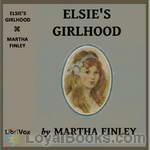 Elsie's Girlhood
Elsie's Girlhood
In the third book of Martha Finley's much-loved Elsie Dinsmore series, Elsie's life is traced from the tender age of 12 or 13 to the mature age of 21. Her life is not all sunshine and roses, but she is secure in the love of the Lord and her family. | |
 Elsie's Womanhood
Elsie's Womanhood
The fourth book in the Elsie Dinsmore series, Elsie grows into a young woman. She marries her father's old friend, Edward Travilla, and together start a family. The latter half of the book occurs during the Civil War. | |
 Elsie's Motherhood
Elsie's Motherhood
After the Civil War, Elsie and her family return to their home in the South, dealing with the upheaval that the Reconstruction Era brought during the years after the war. | |
 Elsie's Children
Elsie's Children
This book continues the delightful "Elsie Dinsmore" series. Elsie's children, introduced in the previous volume, live life, grow up, and encounter various problems of their own. Additional Proof Listeners: AlaynaMay & Rachel. | |
 Elsie's Widowhood
Elsie's Widowhood
The seventh in the Elsie Dinsmore series, this book begins with the death of Elsie's beloved husband. As Elsie learns to live in widowhood, the story shifts to the lives of those most precious to her - her children and extended family. | |
 Grandmother Elsie
Grandmother Elsie
Change has come to Elsie's family in the 8th book of this delightful series. Her daughter, Violet, marries a naval Captain with three children of his own and the children try to adjust to life with their new step-mother and her family. - Summary by Gabrielle C | |
 Mildred Keith
Mildred Keith
Mildred Keith has a good life in Lansdale, Ohio - family, friends and school keep her happy and busy. But when her parents announce they're all moving to Indiana, Mildred's faith is tested beyond anything she could have imagined. Through good times and bad, follow Mildred and her family as they learn to rely on the Lord for strength in every circumstance! This project was proof-listened by Adele de Pignerolles and Linette Geisel. - Summary by Rachel | |
 Mildred at Roselands
Mildred at Roselands
In order to recover her health, Mildred Keith goes to visit her mother's extended family, the Dinsmores, in the South. Mildred makes new friends while at Roselands, learns important lessons and grows in her faith in Christ. | |
 Ella Clinton
Ella Clinton
The Story of Ella Clinton who regardless of her desire to be good is ruled by her passions. Then one day she submits her desires to the only source of good - Almighty God. She is known to be His child by her fruits, for "By Their Fruits Ye shall know them". - Summary by Michelle Hannah | |
By: Martin Luther (1483-1546) | |
|---|---|
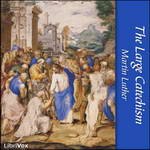 The Large Catechism
The Large Catechism
Luther’s Large Catechism consisted of works written by Martin Luther and compiled Christian canonical texts, published in April of 1529. This book was addressed particularly to clergymen to aid them in teaching their congregations. Luther’s Large Catechism is divided into five parts: The Ten Commandments, The Apostles’ Creed, The Lord’s Prayer, Holy Baptism, and The Sacrament of the Altar. It and related documents was published in The Book of Concord in 1580. | |
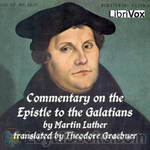 Commentary on St. Paul's Epistle to the Galatians
Commentary on St. Paul's Epistle to the Galatians
Martin Luther strove to give a verse by verse exegesis of the Epistle to the Galatians in the work. The original work, written in Latin in around 1516, was much longer. This translation by Theodore Graebner (1876-1950) strove to produce a copy of the work in a format and with wording much more applicable to the general English-speaking American public. | |
 The Small Catechism
The Small Catechism
Luther's Small Catechism (Der Kleine Katechismus) was written by Martin Luther and published in 1529 for the training of children. Luther's Small Catechism reviews The Ten Commandments, The Apostles' Creed, The Lord's Prayer, The Sacrament of Holy Baptism, The Office of the Keys & Confession, and The Sacrament of the Eucharist. It is included in the Lutheran Book of Concord as an authoritative statement of what Lutherans believe. The Small Catechism is widely used today in Lutheran churches as part of youth education and Confirmation. | |
 The Smalcald Articles
The Smalcald Articles
MANUAL OF SURGERY, OXFORD MEDICAL PUBLICATIONSBY ALEXIS THOMSON, F.R.C.S.Ed.PREFACE TO SIXTH EDITION Much has happened since this Manual was last revised, and many surgical lessons have been learned in the hard school of war. Some may yet have to be unlearned, and others have but little bearing on the problems presented to the civilian surgeon. Save in its broadest principles, the surgery of warfare is a thing apart from the general surgery of civil life, and the exhaustive literature now available on every aspect of it makes it unnecessary that it should receive detailed consideration in a manual for students... | |
 The Bondage of the Will
The Bondage of the Will
On the Bondage of the Will (Latin: 'De Servo Arbitrio', literally, "On Un-free Will", or "Concerning Bound Choice"), by Martin Luther, was published in December 1525. It was his reply to Desiderius Erasmus's De libero arbitrio diatribe sive collatio or On Free Will, which had appeared in September 1524 as Erasmus's first public attack on Luther, after being wary about the methods of the reformer for many years. At issue was whether human beings, after the Fall of Man, are free to choose good or evil. The debate between Luther and Erasmus is one of the earliest of the Reformation over the issue of free will and predestination. | |
 Concerning Christian Liberty
Concerning Christian Liberty
Early in the course of the Reformation (1520) Martin Luther penned a trilogy of foundational documents addressing the Church, the Nobility and the Christian life. This document concerning the Christian life expounds the famous paradox: "A Christian man is the most free lord of all, and subject to none; a Christian man is the most dutiful servant of all, and subject to every one." | |
 On the Babylonian Captivity of the Church
On the Babylonian Captivity of the Church
Early in the course of the Reformation (1520) Martin Luther penned a trilogy of foundational documents addressing the German Nobility, the Church and the Christian. "On the Babylonian Captivity of the Church" appeared second. In it, Luther sifts the wheat from the chaff as regards the seven sacraments of the Roman Church. | |
 Exposition upon the Song of the Blessed Virgin Mary called Magnificat
Exposition upon the Song of the Blessed Virgin Mary called Magnificat
Luther's 1521 exposition of the Magnificat was written for John Frederick I, Elector of Saxony , at that time a teenager. It was written in two parts, being interrupted by Luther's appearance at the Diet of Worms. It is sermonic in form but written to be read rather than heard. - Summary by InTheDesert | |
By: Mary Baker Eddy (1821-1910) | |
|---|---|
 The People's Idea of God
The People's Idea of God
“The improved theory and practice of religion and of medicine are mainly due to the people’s improved views of the Supreme Being.” (from The People’s Idea of God) | |
By: Mary E. Mannix | |
|---|---|
 Child's Life of St. Joan of Arc
Child's Life of St. Joan of Arc
A biography of Saint Joan of Arc, geared towards children, but also can easily be enjoyed by adults. | |
By: Mary Esther Miller MacGregor (1876-1961) | |
|---|---|
 Black-Bearded Barbarian
Black-Bearded Barbarian
A fictionalized biography of George Mackay (1844-1901), an influential Presbyterian missionary in northern Taiwan. | |
By: Mary Martha Sherwood (1775-1851) | |
|---|---|
 Fairchild Family
Fairchild Family
The adventures of Lucy, Emily and Henry are described in this short novel, written and set in Regency England. Their naughtiness, their activities and their interactions with the children next door; Miss Augusta and Charles Trueman, are all delightfully described. Their daily lives are an insight into childhood and the family and religious values at the time - each chapter has a moral lesson, and the good end happily, while the bad get what they deserve. | |
By: Mary Sidney Herbert (1561-1621) | |
|---|---|
 Psalmes of David (Sidney Psalms)
Psalmes of David (Sidney Psalms)
A poetic version of the Psalms by Sir Philip Sidney and his sister, Mary Sidney Herbert, the Countess of Pembroke . "It is possible that the original Autograph manuscript of Sir Philip Sidney may still exist in the library at Wilton. It would have been desirable to have ascertained this, as it might prove which were versified by him, and which by his sister. This I have not been able to accomplish." Some of the Psalms may have been written by a third party. The Christian Remembrancer magazine for June, 1821 contains a paper by Dr... | |
By: Max Heindel (1865-1918) | |
|---|---|
 The Rosicrucian Mysteries
The Rosicrucian Mysteries
A primer for those interested in the basic philosophy, beliefs & secrets of the Rosicrucians. | |
By: Maximilian Schele De Vere (1820-1898) | |
|---|---|
 Modern Magic
Modern Magic
M. Schele de Vere was born in Sweden in 1820 and studied language in Germany before eventually becoming a professor of modern language at the University of Virginia in 1844 where he would teach for more than 50 years. During his time as a professor, he would write many books, mostly focusing on language. One of his last works, being first published in 1873, "Modern Magic" instead focuses on the occult. From the preface: "The main purpose of our existence on earth—aside from the sacred and paramount... | |
By: Meister Eckhart (1260-1327) | |
|---|---|
 Meister Eckhart's Sermons: First Time Translated into English
Meister Eckhart's Sermons: First Time Translated into English
"If a piece of wood became as aware of the nearness of God as an archangel is, the piece of wood would be as happy as an archangel." This is a collection of seven sermons of Meister Eckhart, the German medieval scholastic philosopher-theologian, which were translated by Claude Field and published with a Preface in approximately 1909. The publication was titled Heart and Life Booklets. No. 22, and published in London by H. R. Allenson, Ltd. / Racquet Court, 111 Fleet Street, E.C. | |
By: Mikhail Bakunin (1814-1876) | |
|---|---|
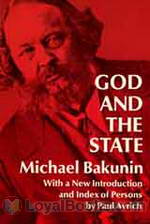 God and the State
God and the State
Bakunin’s most famous work, published in various lengths, this version is the most complete form of the work published hitherto. Originally titled “Dieu et l’état”, Bakunin intended it to be part of the second portion to a larger work named “The Knouto-Germanic Empire and the Social Revolution” (Knouto-Germanic Empire is in reference to a treaty betwixt Russia and Germany at the time), but the work was never completed. (from book introduction) | |
By: Mildred Duff (1860-1932) | |
|---|---|
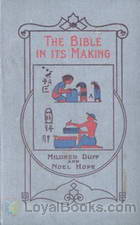 The Bible in Its Making - The Most Wonderful Book in the World
The Bible in Its Making - The Most Wonderful Book in the World
One great universal law runs through the realm of nature. Our Saviour gave it in a sentence: 'First the blade, then the ear, after that the full corn in the ear.' It is with the desire to show that the same law rules in another of God's creations — The Bible — that this little volume has been prepared. The Bible has as literally 'grown' as has an oak tree; and probably there is no more likeness between the Bible as we know it to-day and its earliest beginning, than we find between the mighty tree, and the acorn from which it sprang... | |
By: Minot Judson Savage (1841-1918) | |
|---|---|
 Unitarian Catechism
Unitarian Catechism
This is a brief catechism of common Unitarian beliefs. As with most catechisms, the material is presented in a question and answer form. - Summary by KevinS | |
By: Mírzá Abu’l-Fadl Gulpáygání (1844-1914) | |
|---|---|
 The Brilliant Proof (Burhäne Lämé) in reply to an attack upon the Bahai Revelation by Peter Z. Easton
The Brilliant Proof (Burhäne Lämé) in reply to an attack upon the Bahai Revelation by Peter Z. Easton
“In these days,” writes the renowned Bahá’í scholar, Mírzá Abu’l-Fadl, “which are the latter days of 1911, A. D. and the early days of 1330 A. H., I have seen a curious article which astonished me. What did I see? I find that one of the missionaries of the Protestant sect, who accounts himself among the learned men of the twentieth century, a helper of the pure religion of Christ and one of the civilized and cultured occidentals, by name, Peter Z. Easton, has been so provoked by jealousy... | |
 Brilliant Proof (Burhäne Lämé) in reply to an attack upon the Bahai Revelation by Peter Z. Easton
Brilliant Proof (Burhäne Lämé) in reply to an attack upon the Bahai Revelation by Peter Z. Easton
“In these days,” writes the renowned Bahá’í scholar, Mírzá Abu’l-Fadl, “which are the latter days of 1911, A. D. and the early days of 1330 A. H., I have seen a curious article which astonished me. What did I see? I find that one of the missionaries of the Protestant sect, who accounts himself among the learned men of the twentieth century, a helper of the pure religion of Christ and one of the civilized and cultured occidentals, by name, Peter Z. Easton, has been so provoked by jealousy... | |
By: Moses Maimonides (1138-1204) | |
|---|---|
 Guide for the Perplexed, Part One
Guide for the Perplexed, Part One
The Guide for the Perplexed by Mūsá ibn Maymūn is regarded as one of the most important works of Medieval Jewish thought. The book attempted to harmonize the philosophy of Aristotle with the Rabbinical teachings, but was regarded by many at the time as antithetical to Jewish theology, despite its earnest arguments in vindication of the ways of God. - Summary by Daniel Davison | |
By: Mrs. O. F. Walton (1849-1939) | |
|---|---|
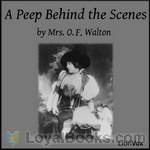 A Peep Behind the Scenes
A Peep Behind the Scenes
Rosalie is the daughter of a traveling theater master and is envied by many young girls as she appears to live a life full of glamour, glitz, and glory. But beneath the happy smiling face is a hurting heart, a deep sorrow for her dying mother, and a wretched life. Follow Rosalie as she learns of the Good Shepherd who loves and cares for her, and begins to trust Him for daily strength. | |